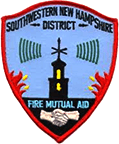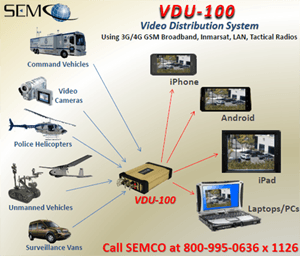.png)
 One of the oldest mutual aid companies in America was established in 1953 under a New Hampshire State Law RSA- 154:30 (A) to (H) that established the organization structure for a District Fire Mutual Aid System. Fire Mutual Aid, located in Keene, NH is organized in an official capacity as a municipal district. The agency started dispatching for the municipality in 1958, and has grown to dispatching 78 fire departments and 21 EMS agencies over 3,000 square miles in the three states of New Hampshire, Vermont, and Massachusetts. Chief Phillip Tirrell started as a dispatcher 26 years ago and has been the Fire Chief for the last six years. Prior to becoming the Chief of the Mutual Aid System he spent 30 years as the Chief of the Lempster Fire Department.
One of the oldest mutual aid companies in America was established in 1953 under a New Hampshire State Law RSA- 154:30 (A) to (H) that established the organization structure for a District Fire Mutual Aid System. Fire Mutual Aid, located in Keene, NH is organized in an official capacity as a municipal district. The agency started dispatching for the municipality in 1958, and has grown to dispatching 78 fire departments and 21 EMS agencies over 3,000 square miles in the three states of New Hampshire, Vermont, and Massachusetts. Chief Phillip Tirrell started as a dispatcher 26 years ago and has been the Fire Chief for the last six years. Prior to becoming the Chief of the Mutual Aid System he spent 30 years as the Chief of the Lempster Fire Department.
Fire Mutual Aid dispatches rural departments. Of these agencies, only a handful are made up of departments with a full time permanent force. Most have either all volunteer or “paid call” Firefighters and only a few have a paid Fire Chief. Chief Tirrell responds to calls within the municipality to coordinate mutual aid assets on scene, typically any incident requesting a second alarm. At the Ready Magazine caught up with Chief Tirrell to discuss how Fire Mutual Aid has addressed the communication challenges of mutual aid.
In his mutual aid district, all radios are interoperable. The state of New Hampshire provided a Radio Interoperability Grant Program, and this provided the opportunity to address communication challenges within the state. Within the Chief’s fire district, this includes 900 portable radios across New Hampshire, and about another 600 radios in Vermont. All radios and the 19 antenna sites are all narrow banded in compliance with the FCC mandate. The systematic narrow banding program began in September 2012, and allowed all equipment to meet the requirements without any communications failure.
All Firefighters are dispatched on the same VHF frequency. EMS agencies are dispatched on dedicated EMS frequencies. There are six additional Tactical Channels available as dedicated incident command communications frequencies. Any of the 78 fire departments who respond to provide mutual aid can communicate together on scene on one of the tactical Channels. If EMS responds, they are capable of also switching to one of the tactical channels. So is Law Enforcement. No longer does a dispatcher from the fire side have to contact the police dispatcher to relay a message to someone across the street. The Interoperability Radio Grant addressed all emergency services agencies to provide a streamlined communications capability.

Many of the “border” communities that do not belong to the municipality can still receive the benefit of the interoperable communications planning. Because of the State of New Hampshire Fire Mobility Plan, when any of the departments within the municipality respond to a scene outside their jurisdiction, the radios are capable of changing to another district Tactical Channels, or Fire Mutual Aid departments can provide additional portable radios that provide the bank of Fire Mutual Aid’s Tactical Channels. With 1500-2000 Firefighters in the system, the consistency of available communications is critical.
“Are there any issues? Sure.” Chief Tirrell addresses those through field training with the different departments, but the capability to switch to another bank of channels is there. The dispatchers at Fire Mutual Aid act also as liaisons to the different communities, ensuring run cards and mutual aid equipment inventory is up to date. In addition to two on duty dispatchers, Fire Mutual Aid has a Deputy Chief of operations who oversees the dispatch center and a Deputy Chief of Administration who updates the CAD system working daily to keep the agency running smoothly.
The region is seeing population growth and a rapid increase in the size of its communities. The municipality has all enhanced 911 within the NH and the VT communities it dispatches for, and with 3,000 square miles updating new streets and addresses is critical. When a call comes in to dispatch, the enhanced 911 system feeds directly to the CAD and provides the dispatcher with a map to the call. Unlike many jurisdictions, Fire Mutual Aid has maps for both states loaded, thanks to hard work and coordination between agencies. New Hampshire has a primary Public Safety Answering Point (PSAP) and one for “overflow” and cell calls. The state of Vermont has several PSAPs around the state, and often a call is received far removed from the actual location of the emergency.
The success of the interoperability program has led other agencies to consult with Fire Mutual Aid when designing their own programs, or updating existing ones. Los Angeles County is one such district who looked to the Fire Mutual Aid model for interagency communications in the early 60‘s. Across New England the Fire Mobilizations Plan is expanding to account for interoperability with federal agency frequencies as well, to ensure that local departments can communicate on federal frequencies when mutual aid from that level of response is required.
Fire Mutual Aid also has an on-site radio repair shop, and recently had the opportunity to purchase the building where the municipality began operating from 55 years ago. What’s next? The Chief told us they will begin offering training space for member towns at no cost. For more information, or to reach Chief Tirrell, visit http://firemutualaid.com/. You can also follow them on Facebook!








